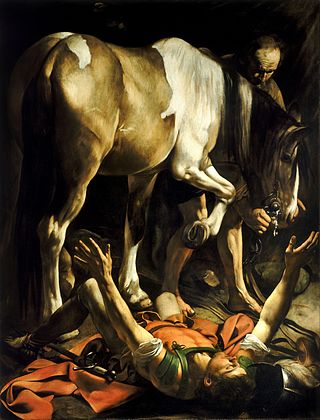Related Research Articles

The Epistle of James is a general epistle and one of the 21 epistles in the New Testament.

Plato was an Ancient Greek philosopher born in Athens during the Classical period in Ancient Greece. He founded the Platonist school of thought and the Academy, the first institution of higher learning on the European continent.

An epistle is a writing directed or sent to a person or group of people, usually an elegant and formal didactic letter. The epistle genre of letter-writing was common in ancient Egypt as part of the scribal-school writing curriculum. The letters in the New Testament from Apostles to Christians are usually referred to as epistles. Those traditionally attributed to Paul are known as Pauline epistles and the others as catholic epistles.

Pseudepigrapha are falsely attributed works, texts whose claimed author is not the true author, or a work whose real author attributed it to a figure of the past.
The catholic epistles are seven epistles of the New Testament. Listed in order of their appearance in the New Testament, the catholic epistles are:

The Pauline epistles are the thirteen books in the New Testament traditionally attributed to Paul the Apostle.
The Epinomis is a dialogue attributed to Plato. Some sources in antiquity began attributing its authorship to Philip of Opus, and many modern scholars consider it spurious. The dialogue continues the discussion undertaken in Plato's Laws.

Calcidius was a 4th-century philosopher who translated the first part of Plato's Timaeus from Greek into Latin around the year 321 and provided with it an extensive commentary. This was likely done for Bishop Hosius of Córdoba. Very little is otherwise known of him.

The Seventh Letter of Plato is an epistle that tradition has ascribed to Plato. It is by far the longest of the epistles of Plato and gives an autobiographical account of his activities in Sicily as part of the intrigues between Dion and Dionysius of Syracuse for the tyranny of Syracuse. It also contains an extended philosophical interlude concerning the possibility of writing true philosophical works and the theory of forms. Assuming that the letter is authentic, it was written after Dion was assassinated by Calippus in 353 BC and before the latter was in turn overthrown a year later.
The Epistles of Plato are a series of thirteen letters traditionally included in the Platonic corpus. Their authenticity has been the subject of some dispute, and scholarly consensus has shifted back and forth over time. They were "generally accepted as genuine until modern times"; but by the close of the nineteenth century, many philologists believed that none of the letters were actually written by Plato. Now every letter except the First has some defenders of its authenticity. The Twelfth is also widely regarded as a forgery, and the Fifth and Ninth have fewer supporters than the others.
The First Letter of Plato, also called Epistle I or Letter I, is an epistle that tradition has ascribed to Plato, though it is almost universally considered a forgery. In the Stephanus pagination, it spans III. 309a–310b.
The Tenth Letter of Plato, also known as Epistle X or Letter X, is an epistle that tradition has ascribed to Plato. It is the shortest of the Epistles of Plato, comprising two or three sentences aside from the salutation, and spanning a single letter in the Stephanus pagination (358c).
The Twelfth Letter of Plato, also known as Epistle XII or Letter XII, is an epistle that tradition has ascribed to Plato, though it is almost certainly a literary forgery. Of all the Epistles, it is the only one that is followed by an explicit denial of its authenticity in the manuscripts. In the Stephanus pagination, it spans 359c–e of Vol. III.
The Ninth Letter of Plato, also called Epistle IX or Letter IX, is an epistle that is traditionally ascribed to Plato. In the Stephanus pagination, it spans III. 357d–358b.
The Fifth Letter of Plato, also called Epistle V or Letter V, is an epistle that tradition has ascribed to Plato. It falls among those Epistles of Plato that have nothing to do with Sicilian politics and the intrigues between Dion and his nephew, Dionysius the Younger, tyrant of Syracuse. In the Stephanus pagination it spans III. 321c–322c.
The Second Letter of Plato, also called Epistle II or Letter II, is an epistle that tradition has ascribed to Plato, though some scholars consider it a forgery. In the Stephanus pagination, it spans III. 310b–315a.
Socrates the Younger was an ancient Athenian philosopher. Ancient texts suggest that he was a young student of the elder Socrates and later a cohort of Plato. He is best remembered for his depiction in Plato's Statesman, and scholars have suggested that he had ties to Academic and Pythagorean philosophy.
The Fourth Letter, or Fourth Epistle, is one of thirteen letters which are traditionally attributed to Plato.
The Sixth Letter, or Sixth Epistle, is one of thirteen letters which are traditionally attributed to Plato.
